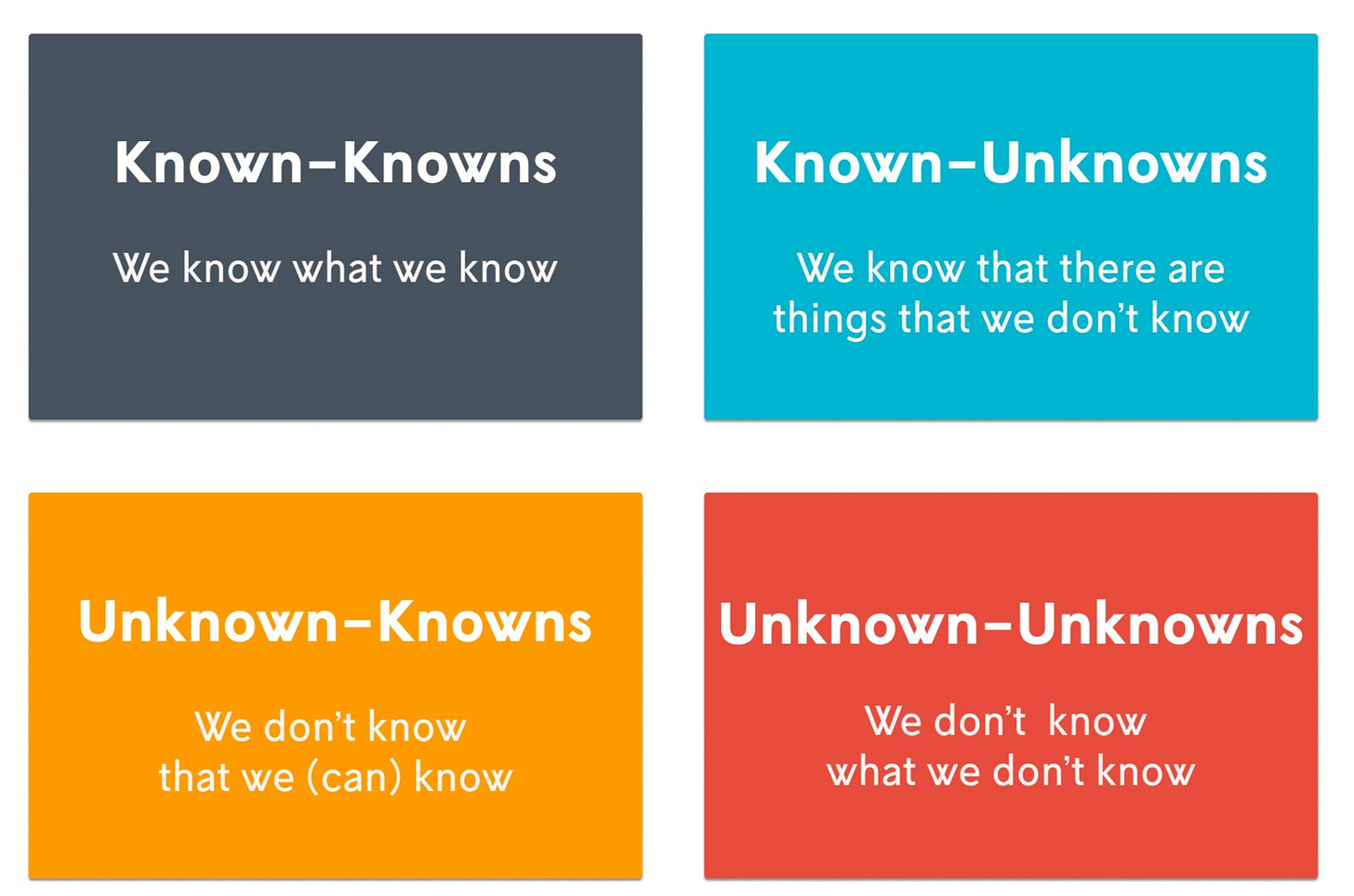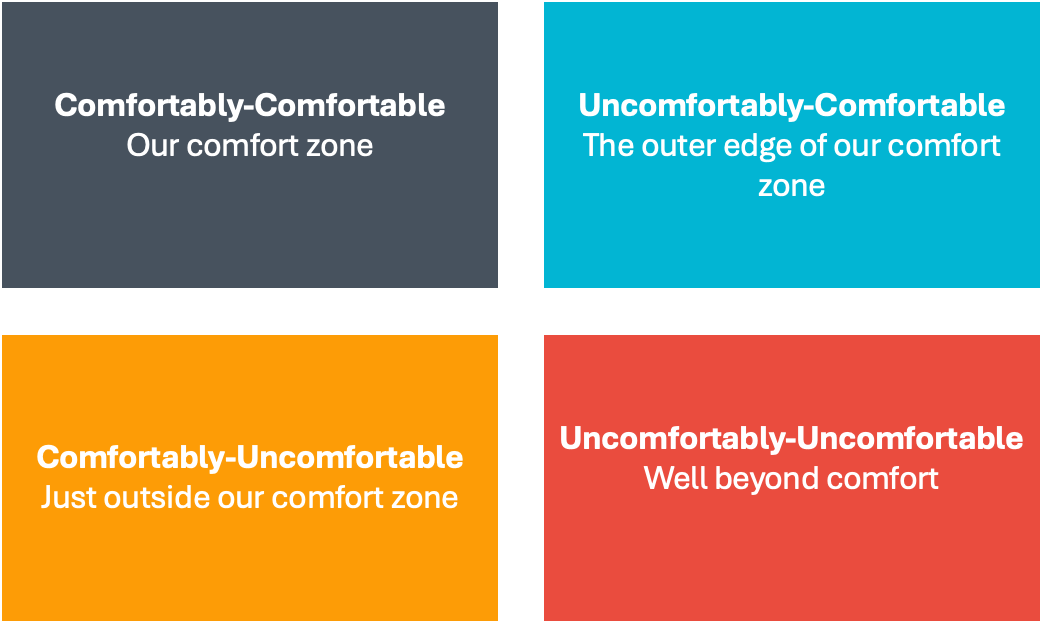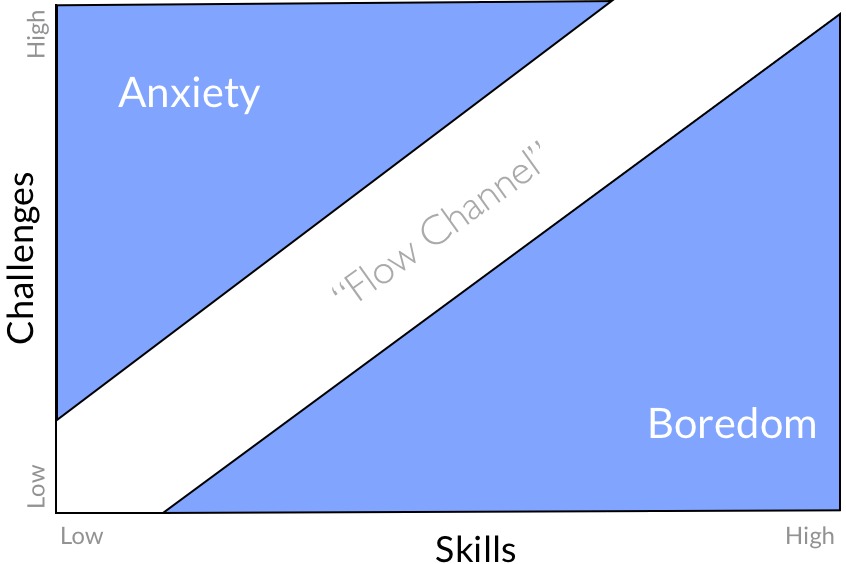A Window into Health & Performance
The Role of Comfort in Health and Performance
Many recent conversations I’ve had have centred around the role of ‘comfort’ or indeed ‘being uncomfortable’ as it pertains to both health and performance. The understanding of being uncomfortable and growth, especially when it comes to the sporting arena, is a path well trodden. Having said this, putting some paradigm to the, at times, somewhat performative nature of this cliche brought me to write this piece.
How uncomfortable? Can we be too uncomfortable? How does this relate to health? Let’s see how well I can answer these and more.
Johari’s Window
Many readers would be familiar with Johari’s window. If not by name, by concept or maybe even via the famous Donald Rumsfeld quote. If I am are yet to ring any bells for you, the concept is that of knowns and unknowns. Specifically; known knowns, known unknowns, unknown knowns and unknown unknowns as is displayed below (in ‘Johari’s window’).
Now, like many models or concepts, this can at times get a little bastardised for use by different people (I am just as guilty as the next guy here). But the prevailing concept stands and hopefully makes sense to readers. There are things we know, and know we don’t know. There are also things we we didn’t know we knew (perhaps forgotten or intuition based - Blink by Malcom Gladwell comes to mind here). Crucially though, in this paradigm are the unknown-unknowns, as these are unforeseeable and in some contexts could be sources of failure which are by definition almost impossible to be ready for.
Given my aforementioned discussions on comfort and discomfort, their role in health and performance as well as some thinking around Johari’s window, I was prompted to develop both this concept and write this piece (though not enough to come up with a really catchy name for the window).
The Window of Progress
It is worth remembering that health and performance have many similar drivers and approaches, after all, they are both about stimuli creating a response for the organism (us) to adapt. It is also worth mentioning that everyone is wired differently (something I discussed as a central theme here) so we will inherently find different things comfortable and uncomfortable. Or perhaps, it’s just the severity, or degree, that differs. Regardless, with the eye of faith or a charitable interpretation, the below should make some sense.
Comfortably-Comfortable
This is the realm of the infamous ‘comfort zone.’ I am not of the belief that this needs to be avoided completely and continuously, similarly it is worth thinking about the different aspects of our life (work, relationships, etc etc) in considering it. Perhaps it is even something that needs periodising (more on this here). Regardless, it is at least conventional wisdom, that growth happens outside of this zone, so if change is to be made and improvement sought, it probably happens outside of this zone.
When it comes to a high performance context, little time is spent here. This is why, as they say, ‘high performance isn’t for everyone’, it can be confronting to say the least. It also may be why high performance is uncommon (more on the differences between ‘high performance’, ‘elite’ and ‘professional’ here).
In a health context, this is really the zone of autopilot, which depends on baseline habits in terms of its positive or negative impact on health. Specifically, if autopilot is generally healthy then it is of no significant consequence and energy can be spent elsewhere (see above discussion of periodisation) but if autopilot is unhealthy behaviours, then there is work to do and a comfort zone to extricate oneself from.
Uncomfortably-Comfortable
This is the zone where we lie to ourselves, where we THINK growth really happens. It is the outer edge of our comfort zone, on the precipice of leaving it. Sure we are better off here than being really comfortable, but we aren’t really growing much. It is more performative than it is productive. It’s the discomfort level we go to when being pushed by someone corporate to be uncomfortable in an activity we are mandated to do but are not really that bought into.
The famous Marianne Williamson quote comes to mind here; “Our deepest fear is not that we are inadequate. Our deepest fear is that we are powerful beyond measure. It is our light, not our darkness that most frightens us….” Generally people are probably ‘sand bagging’ a bit, perhaps not just for fear of failure but maybe fear of success.
Comfortably-Uncomfortable
This should be the target for most people, most of the time if they want to see improvement. This is ‘out of your comfort zone’ but within your ‘safety zone’. It is an appropriate challenge - again bastardising via borrowing a concept, optimal challenge for our ability is where we can enter ‘flow’ states (a concept introduced by Mihály Csíkszentmihályi) see the below diagram to explain.
Now whilst we aren’t necessarily chasing ‘flow’ as much as we are progress and development (perhaps ‘growth’), the concept of optimal challenge is still important.
This zone of challenge, where we are uncomfortable but perhaps not chaotically, uncontrollably or uncomfortably so, means we can progress (and, crucially, the stimulus is potent) but it is not such that we freeze or give up from the challenge.
In a performance realm, this is where we really start to accelerate our development. It’s the ‘getting out of your comfort zone’ that everyone talks about. Crucially though, and part of the thesis of this piece, is that it is probably a little less comfortable than most think. If we REALLY want to develop, it’s a little harder and we need to be a little less comfortable than we generally push for.
With respect to health this will vary greatly be individual and aspect of health. For instance, I don’t really struggle on the exercise front - so there’s no great discomfort for me (or maybe there is and it’s doing less), but on the meditation front, I certainly have work to do. In this case, my real value will come not with the smallest meaningful commitment, which isn’t a bad place to start and build a habit from (don’t get confused between habit building and significant progress), but by doing more than I’m comfortable with (it’s probably twice a day for 10mins, not once for 5-7mins). As mentioned, this is a case by case, context by context situation. But broadly, many would be better off in a health context training a little more and harder than they currently are (there’s some evidence you aren’t training as hard as you think), spending more time preparing and eating things they are a little less than comfortable with (be it vegetables, or things that are healthy that we “just can’t bring ourselves to eat”). Or indeed maybe it is going to bed a little earlier than we are comfortable or even drinking less than we’d like.
Uncomfortably-Uncomfortable
This is the zone of the extreme, of the ‘go hard or go home.’ It’s often the zone we enter when we are hyper motivated - alas unfortunately motivation wanes, and if we aren’t appropriately challenged, we won’t have seen the success (or challenge) and we won’t stick to the process to progress because our efforts have been futile.
The problem with this zone is that it is too challenging. We are too far removed from comfort to be able to feel safe enough to develop and perform.
This is not to say there is no value in being here, in fact it provides a foil to the false development zone of “Uncomfortably-Comfortable,” giving valuable context and broadening our perspective on comfort and discomfort. But, this is a temporary and infrequent need, not somewhere to spend significant time.
In the health context, this may be one really tough workout, or a week of exceedingly disciplined eating, but again, the goal is perspective changes on comfort. It is to push us further and disabuse us from the thought that “Uncomfortably-Comfortable” is actually “Comfortably-Uncomfortable.”
This is a zone for brief forays, for gaining perspective and expanding our beliefs in our ability. Beware though, It can also be the trap zone for the belief “if some is good, more is better.”
Comfort and Failure
The ‘Window of Progress’ concept dovetails well with failure. Ultimately our appetite for ‘failure’ or indeed ‘being wrong’ is often a barometer for our speed of learning and development. Far from the Silicon Valley concept of ‘fail fast and pivot’ health and performance are much less volatile environments and as a result require less experimentation and risk. As such, thinking about how failure works within the “Window of Progress” model, fits quite well - you want a good amount, probably more than you are comfortable with for most. It’s the choosing of where to take risks and areas for experimentation that become challenging. Enter Norway.
Some readers may be familiar with the fact that I host a podcast series with some of the best Norwegian endurance athletes and their coach. As a result I have spent a good amount of time with them, virtually and in person. The disproportionate success for such a small country has, of course, sparked interest for what has driven the success. One aspect that has been highlighted, which I have seen in action and am obsessed with, is the concept of “intelligent failures.” This is fairly self explanatory but in doing some searching on the internet for more written about it I came across this piece which I enjoyed. I am not certain this is the exact paradigm or thinking process for the Norwegians but perhaps it takes their concept and puts paradigm to it for us to experiment with safely in our own lives.
I’d love to hear thoughts and comments on this piece, as well as appreciating readers sharing it with others. As mentioned previously, don’t squint too hard at it - it’s a broad brush strokes conceptual model, it is meant to help rather than be gospel. Ideally it prompts folks to examine their levels of comfort and discomfort, perhaps identifying areas that need some change for better results (remember, this may not always be increasing discomfort).




